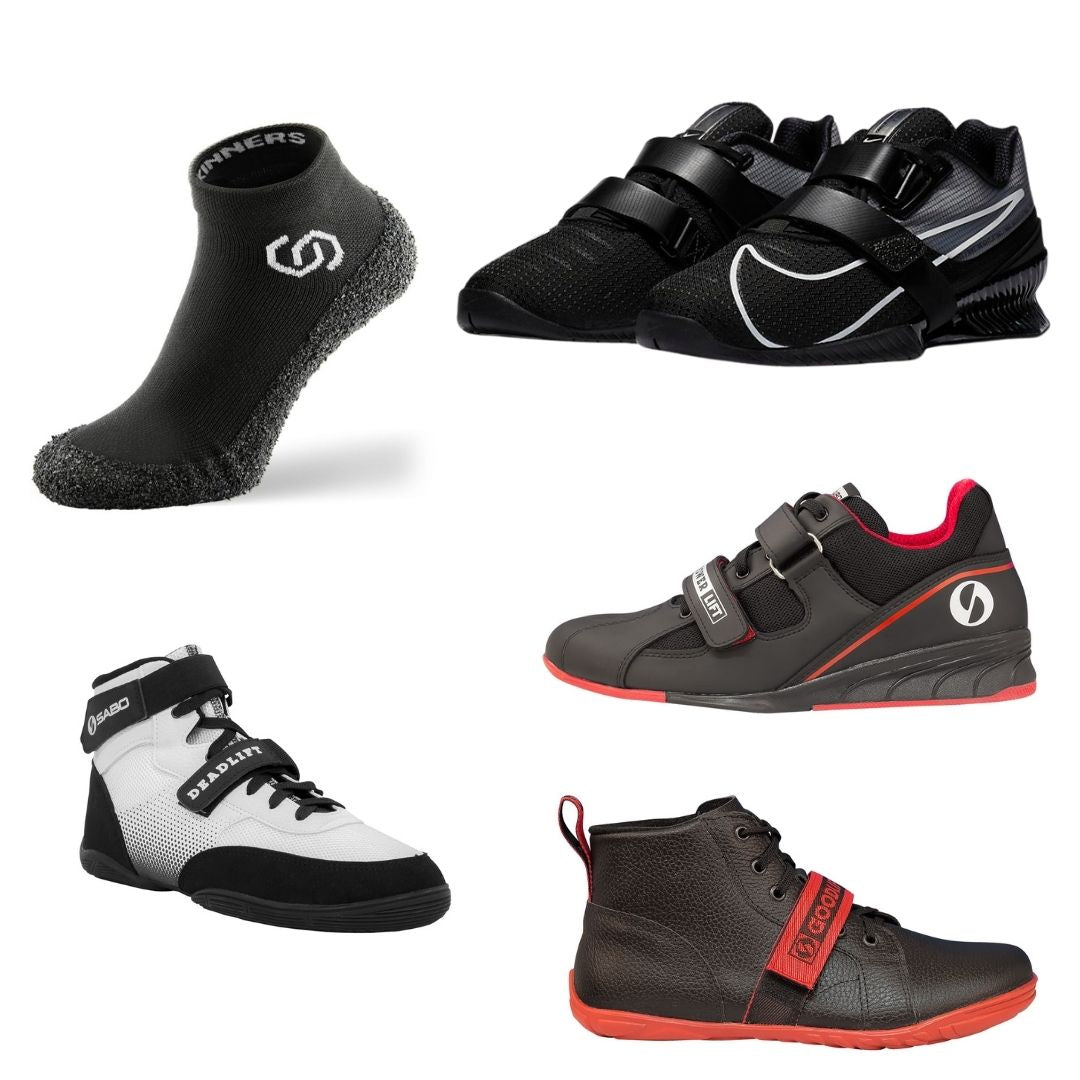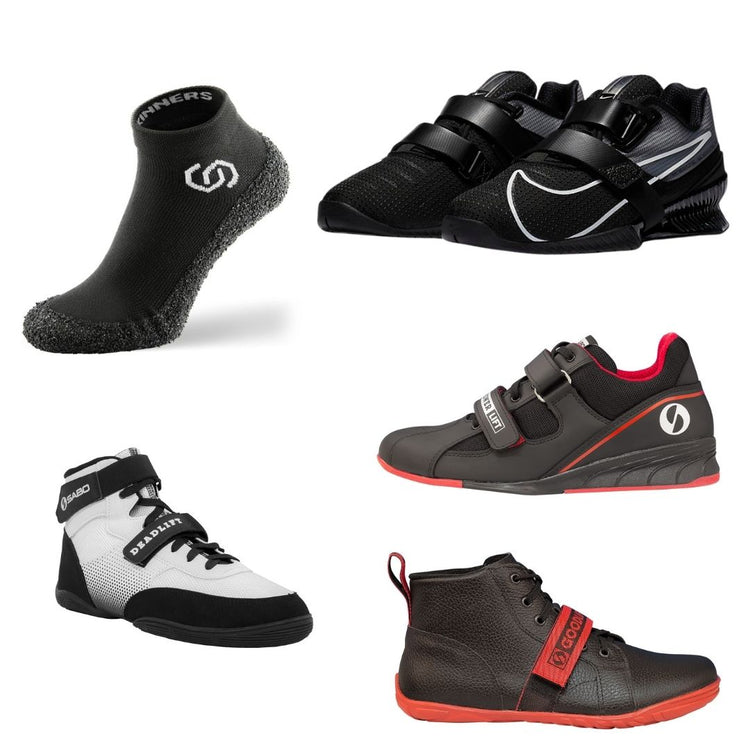Training footwear has become a large point of discussion in training. The characteristics of the footwear, as well as the benefit each shoe type has on their lifting can have an impact on their performance and growth in their chosen strength sport. In this blog we will discuss the key characteristics differentiating both heeled or weightlifting shoes and flat soled shoes as well as which lifters may suit which shoe.
Heeled Shoes (weightlifting shoes):
When you look around a gym you often see more advanced lifters and those that compete in powerlifting and weightlifting wear weightlifting shoes with a small heel. Newer lifters might think that if it works for someone else it surely will be beneficial for someone who just starts out. However, there are often specific reasons why lifters wear a raised heel and why it may or may not be for you.
Heeled Shoes are extremely popular among both the Powerlifting and Weightlifting scenes. These shoes have a 1-2 inch heel which can be handy for lifters who are limited in their ankle mobility or are after a deeper range of motion in their squatting pattern or for lifts like the snatch and clean and jerk. Heeled shoes are rigid in their design, providing the lifter with well rounded support and cushioning, hugging the foot and holding it in place.
Flat Shoes:
Now, while there are many advantages to a raised heel shoe, lifters with good levels of ankle mobility, or lifters who need to focus more on their balance and stability, may be more suited to a flat soled shoe. Flat shoes come in variety, you often see lifters wearing shoes ranging from ankle hugging style shoes, such as SABO Goodlift and Deadlift to basically a sock shoe with good amounts of grip on the bottom, such as Skinners. There are a variety of reasons as to why some lifters prefer these types of shoes to heeled shoes.
Due to their flat sole, a lifter can feel more in contact with the ground beneath them, rather than being boosted up artificially. This can help with even foot pressure in their squatting pattern as they can feel all points of their foot in contact with the ground, which can also help with their balance and stability. Like heeled shoes, flat shoes are quite comfortable to wear, hugging the foot, however they are often less rigid and easier to wear in. Flat soled shoes are often lighter than heeled shoes too, resembling more of a regular footwear feel, which can be extremely comforting and familiar when undertaking heavy lifting.
In Powerlifting, you often see lifters utilising flat shoes when they are performing the deadlift. When deadlifting maximal loads, the goal is to be as close to the ground as possible in order to reduce the distance the bar has to travel from the ground locking the lift out. This is where flat shoes come in handy. Flat shoes have a grippy sole, which is beneficial when deadlifting to ensure the lifter does not slip or shift when pulling. Also, similar to when squatting, due to their more malleable structure, it allows the lifter to feel more in contact with the floor when deadlifting.
Your footwear can play an important role in your training, so making sure you get proper advice and recommendations about which shoe would be best suited is a MUST.
Come into City Strength and check out our range of heeled and flat shoes and ask one of our coaches which shoe would be best suited for you and your training.
Raman Wadhwa
Powerlifting Coach
City Strength


